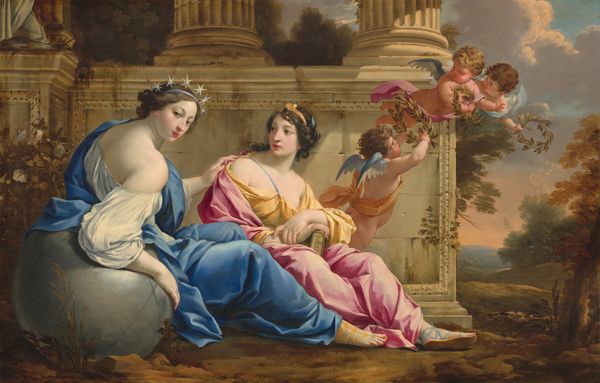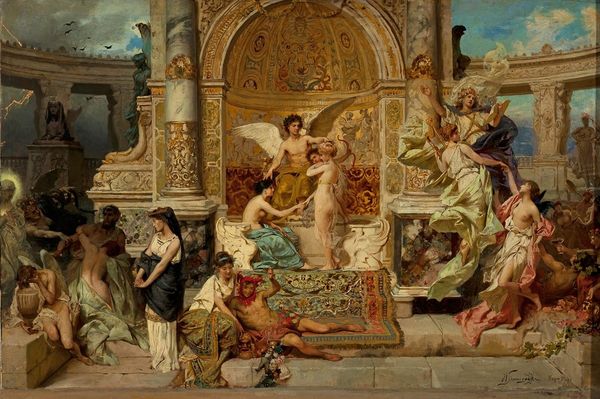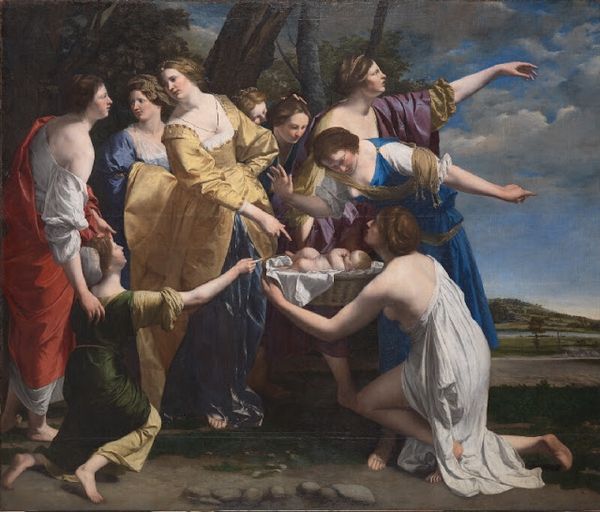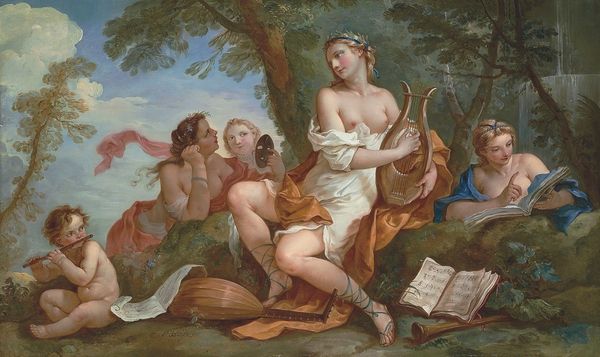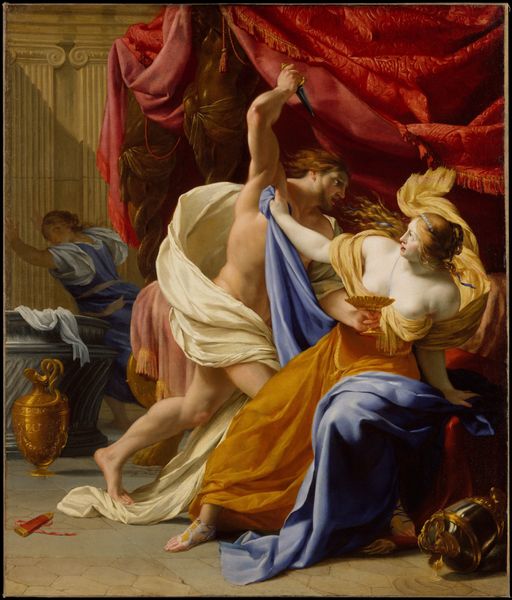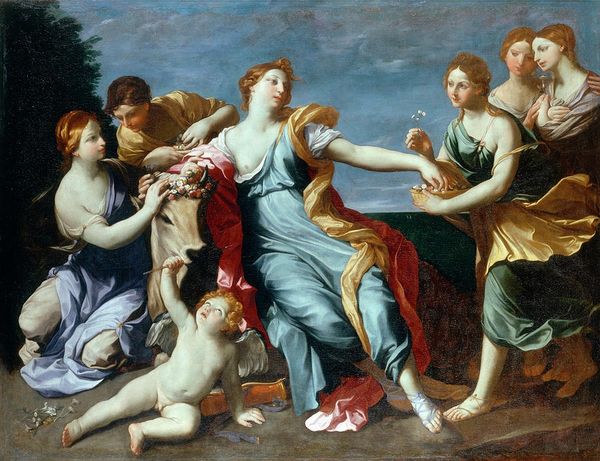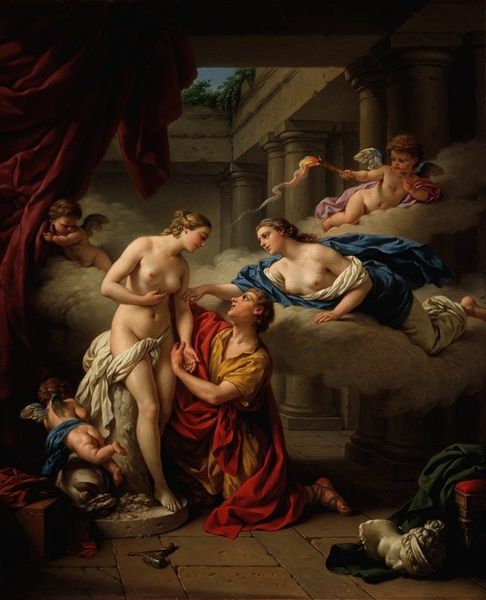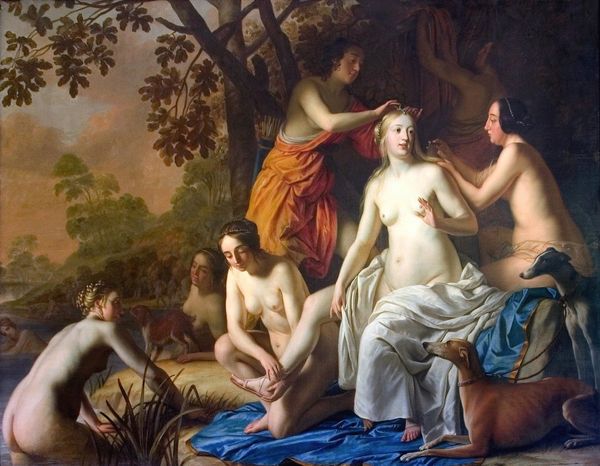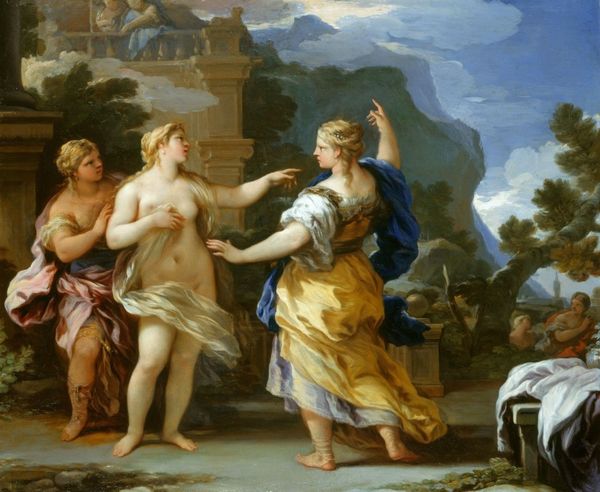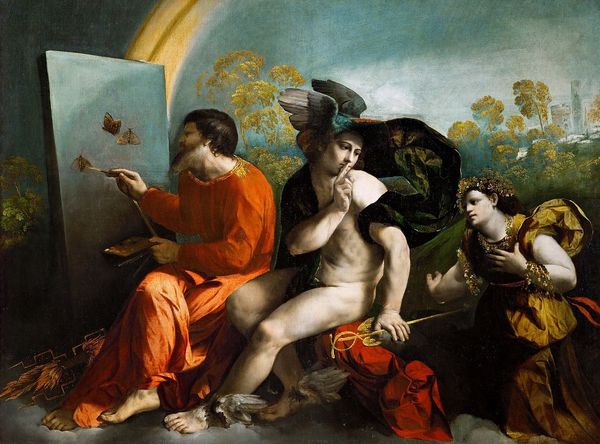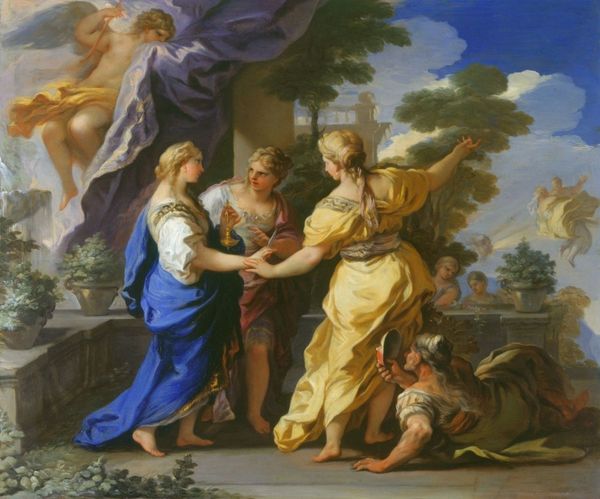
painting, oil-paint
#
allegory
#
baroque
#
painting
#
oil-paint
#
figuration
#
oil painting
#
mythology
#
painting painterly
#
history-painting
Copyright: Public domain
Eustache Le Sueur created this oil painting, titled "Allegory of Magnificence," in France during the 17th century. It embodies the period's fascination with classical antiquity and its use in legitimizing power. In the painting, allegorical figures surround a central female figure who holds a building plan, symbolizing magnificence and grandeur. The other figures seem to assist her, including an angel with a book and cherubs playing. This scene reflects the period's emphasis on reason, order, and the arts as expressions of royal power. It also relates to the architectural boom that was happening in Paris at that time. Royal patronage was central to the careers of artists such as Le Sueur, while institutions like the Académie Royale de Peinture et de Sculpture shaped artistic taste and training. To fully understand the painting’s significance, we can consult period documents like architectural treatises, royal decrees, and artists' biographies. Art historians consider how artists were supported, the values they promoted, and how their work functioned within the broader cultural landscape. The meaning of art always depends on its social and institutional context.
Comments
No comments
Be the first to comment and join the conversation on the ultimate creative platform.
